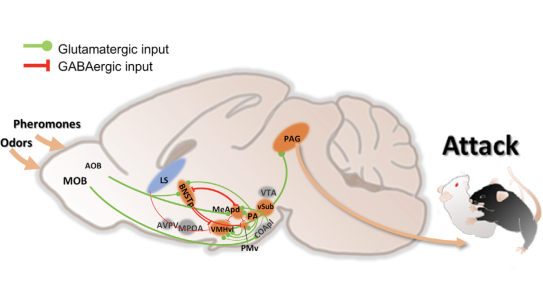The Neural Mechanisms of Social Behaviors

Speaker:
Daya Lin, PhD
Professor, Depts. of Psychiatry and Neuroscience & Physiology
Neuroscience Institute, NYU Grossman School of Medicine
Abstract:
Social behaviors such as fighting, defense, predation, mating, and parenting, are innate, indispensable and ubiquitous across the animal kingdoms. Research in Dr. Lin’s laboratory centers on understanding the neural circuits underlying these powerful behaviors in a genetically tractable model system, mice. Her team of researchers is interested in investigating how the sensory information is relayed, integrated, extracted and diverged to ultimately cause the behavioral output. Various genetic engineering, tracing, functional manipulation, in vivo electrophysiological recording and computational tools are combined to dissect the neural circuits in a great detail. A special focus in her lab is the exploration of. the role of the ventrolateral part of the ventromedial hypothalamus (VMHvl) in driving aggressive behavior. Here they look at the similarities and differences in female versus male neural mechanisms of aggression, and they probe the specific neuropeptides and neurotransmitters that mediate communication in these circuits
Dr. Dayu Lin received her undergraduate degree in biology at Fudan University in China. Subsequently she pursued a Ph.D. degree in the Department of Neurobiology at Duke University, mentored by Dr. Lawrence C. Katz. She then continued her postdoctoral training at Caltech with Dr. David J. Anderson, exploring the neural circuits underlying innate social behaviors, specifically aggression, in mouse models. In November 2010, she started her independent research group at NYU Langone medical center studying the neural mechanisms of social behaviors. For her groundbreaking contribution Dr. Lin was named Klingenstein Neuroscience Fellow and Alfred P. Sloan Fellow. In. addition she is the recipient of the McKnight Scholar Award and Irma T. Hirschi Career Scientist Award.


